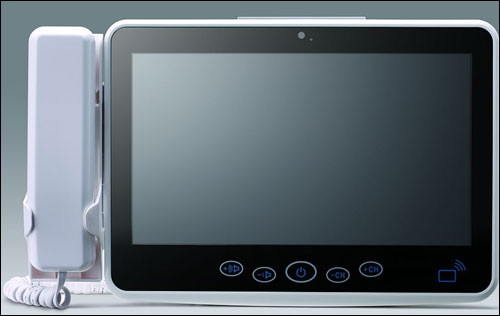Taiwanese computer manufacturer Advantech is leveraging passive radio frequency identification at its recently released HIT series of infotainment terminals that are being employed within health-care settings throughout the United States, Europe and Asia, as well as by college students in Singapore. Because the terminals—which feature a touch screen, an Intel processor and Wi-Fi network functionality—are available with an RFID interrogator that can read passive 13.56 MHz tags, Advantech envisions them being used in a much wider set of applications that could enable users to pay for products and services. Users could also utilize the terminals to view data specifically approved for them, or to set health-club exercise equipment to personal settings with the tap of an RFID-enabled card or mobile phone.
The HIT terminals can be mounted on a desktop or wall, and are available in several sizes, ranging from the most recent and smallest version (the 11.6-inch HIT-W121 model, released in August 2011) to the largest (a 21.5-inch version, expected to be early next year), says Mason Wu, the product manager for Advantech’s Ubiquitous Computing Division within the company’s eService and Applied Computing Group. Other available options for all HIT terminals include a camera, a TV tuning remote (in the event that the device is being used as a television) and a bar-code scanner.
Most prominently, the device is being used at bedsides within some U.S. and European hospitals, in order to enable patients to watch video programming on the screen. By using the remote control or pressing touch-screen prompts, a patient can watch not only entertainment-based programming, but also, for example, educational information regarding his or her injury or ailment. The patient can also utilize the terminal to surf the Internet, or to place video or audio phone calls to family members and friends. The optional built-in RFID reader allows a staff member to use an RFID badge, by tapping it against that reader, to, for instance, retrieve electronic patient records. The HIT terminals come with five programmable buttons that patients can use to summon help during an emergency.
The HIT terminal’s optional RFID interrogator can read passive 13.56 MHz high-frequency (HF) tags compliant with the ISO 14443 and 15693 standards. According to Wu, the company works with several RFID technology providers to supply the readers, which are built into the bottom right-hand section of the device. RFID interrogators that can read other types of tags, such as those operating in the ultrahigh-frequency (UHF) band, could be built into the terminal as well, he says.
Advantech’s previous infotainment terminals, the PIT series, were also equipped with RFID readers. However, the company notes, the HIT series is smaller than the PIT models, with more size options, and is designed to be more attractive in appearance, for use beyond the health-care market.
One example of a customer using the earlier PIT terminals is Taiwan’s Tri-Service General Hospital, which has attached 15-inch PIT terminals to its nursing carts. Nurses can tap their ID badges near the RFID reader to be identified, Wu says, after which the terminal employs a Wi-Fi link to the hospital’s back-end software to access information regarding the particular patient being treated.
With the new HIT version, however, the company has sold the system to a broader array of users. These include the University of Singapore, as well as a European company that is installing the technology within a conference room to enable each individual within a room to be recognized via an RFID badge, and to then access videoconferencing capabilities.
According to Wu, Advantech pictures the technology being used at vending machines, in stores for self-service price checking and payment, and at health clubs in which a member could use an RFID card to access television programs or movies, as well as the equipment’s controls, which could be personalized for that individual.
The RFID functionality is important for the new device, Wu notes, because “it’s payment-capable,” enabling the system to be used with the expected release of NFC-enabled cell phones for payments. “Everyone will have one in their hand,” he says of the NFC-enabled phones, and the PIT devices will be in place to enable payments with those NFC RFID readers embedded in phones. Some customers in Asia and Europe are already testing the system for payment applications, Wu adds.


